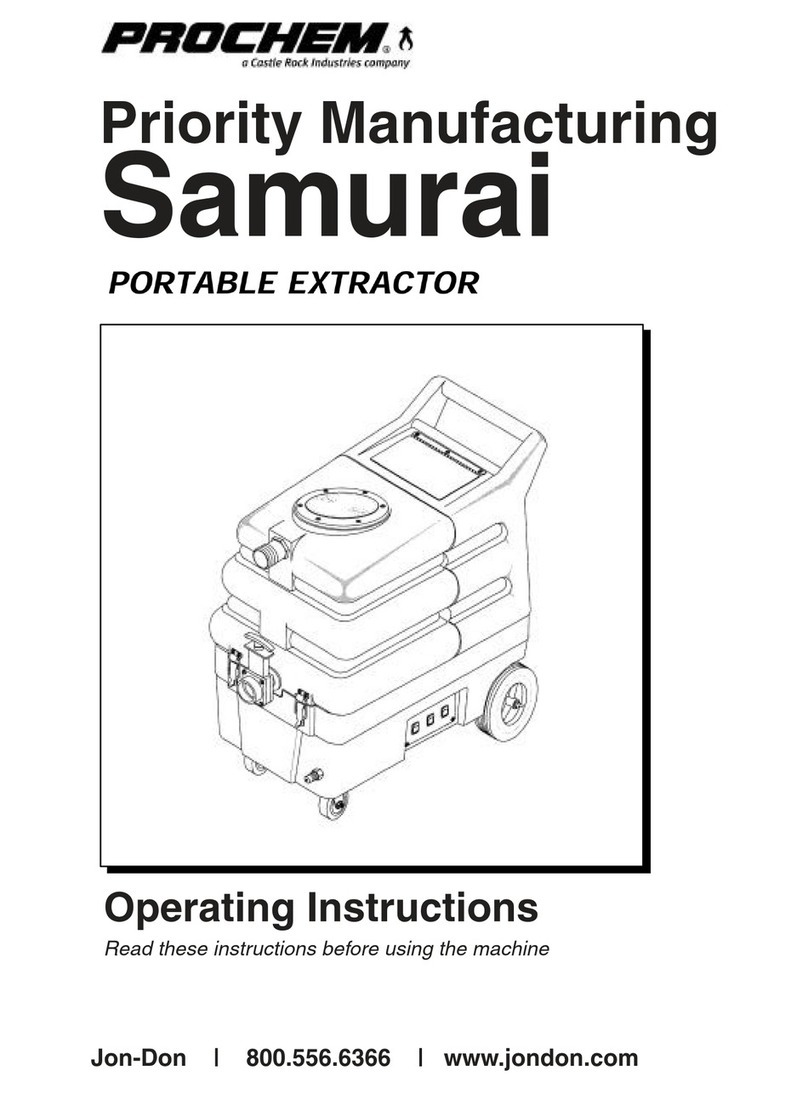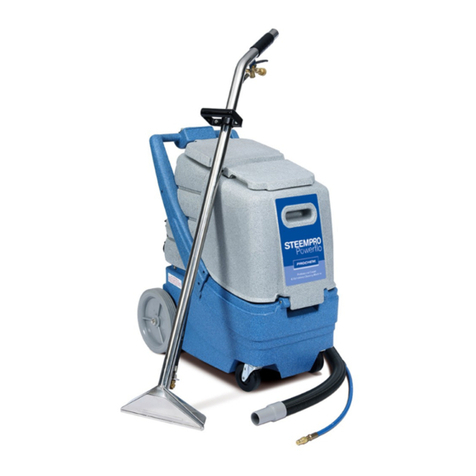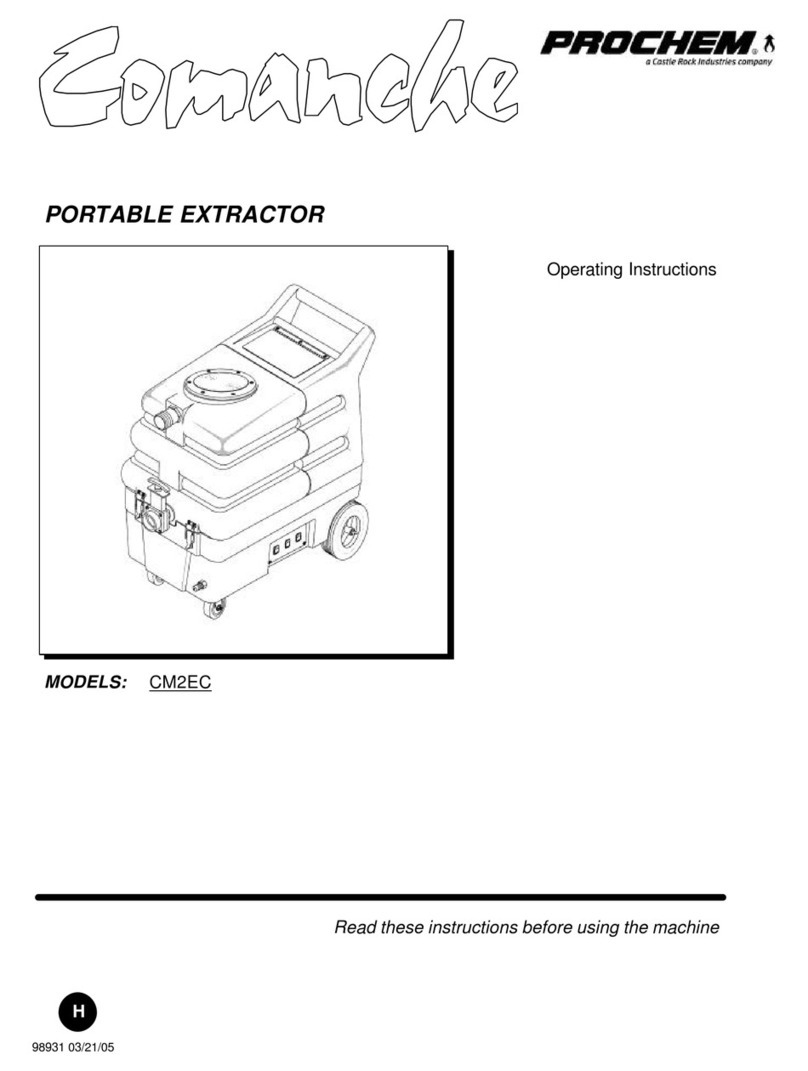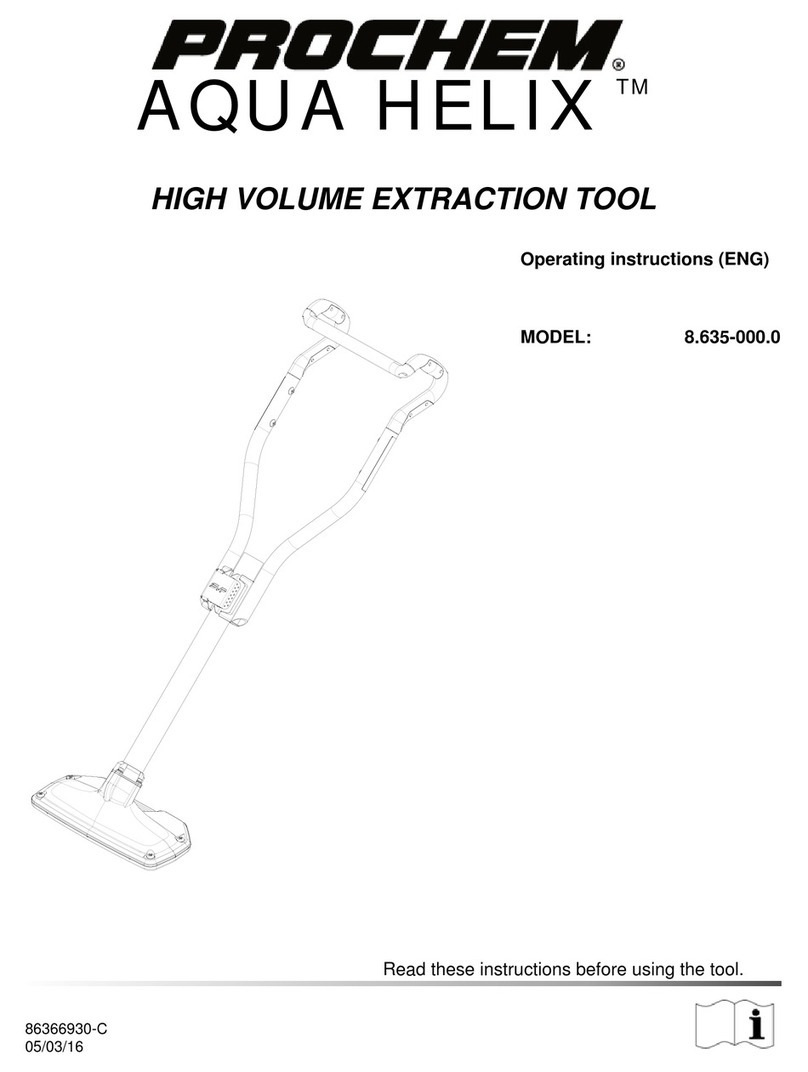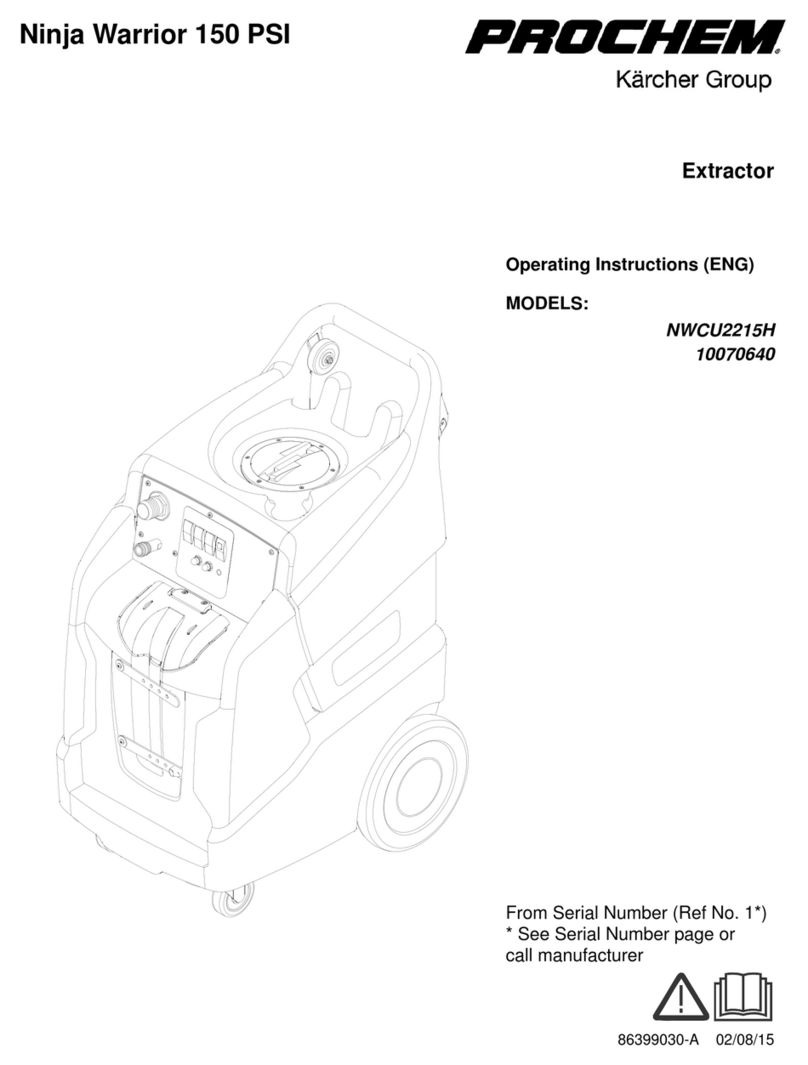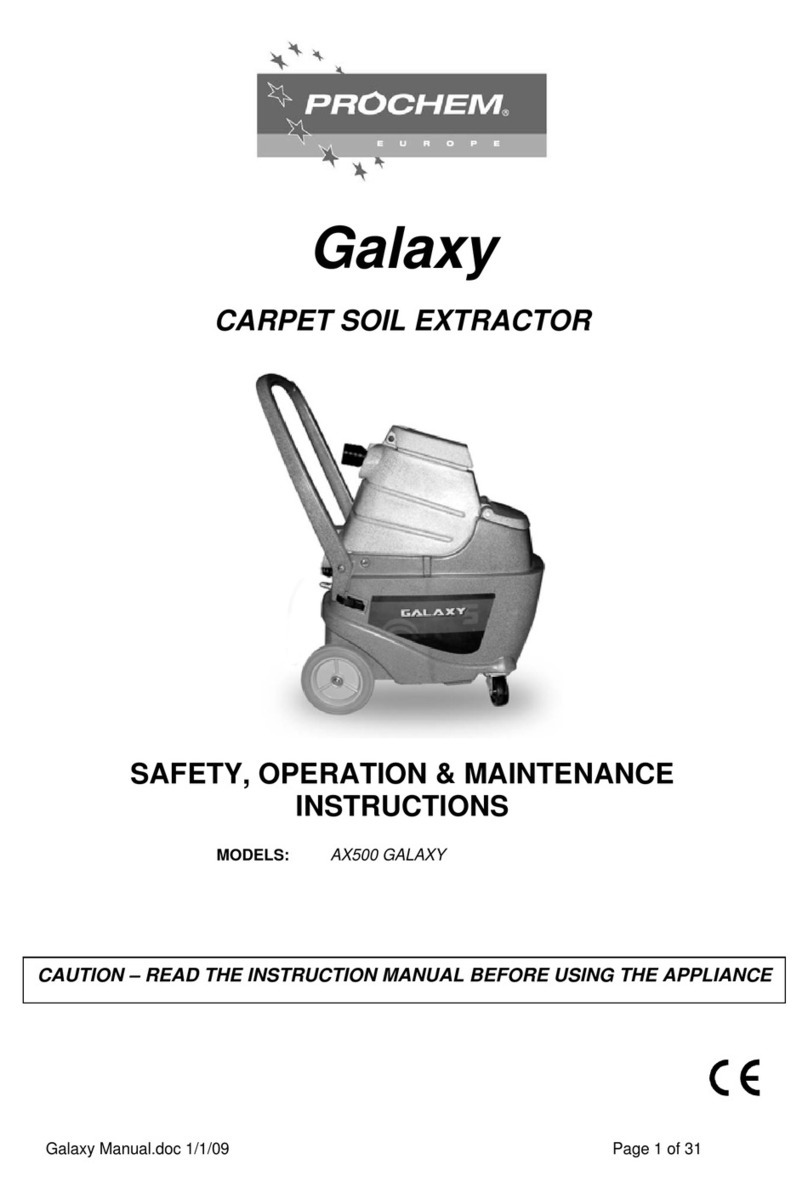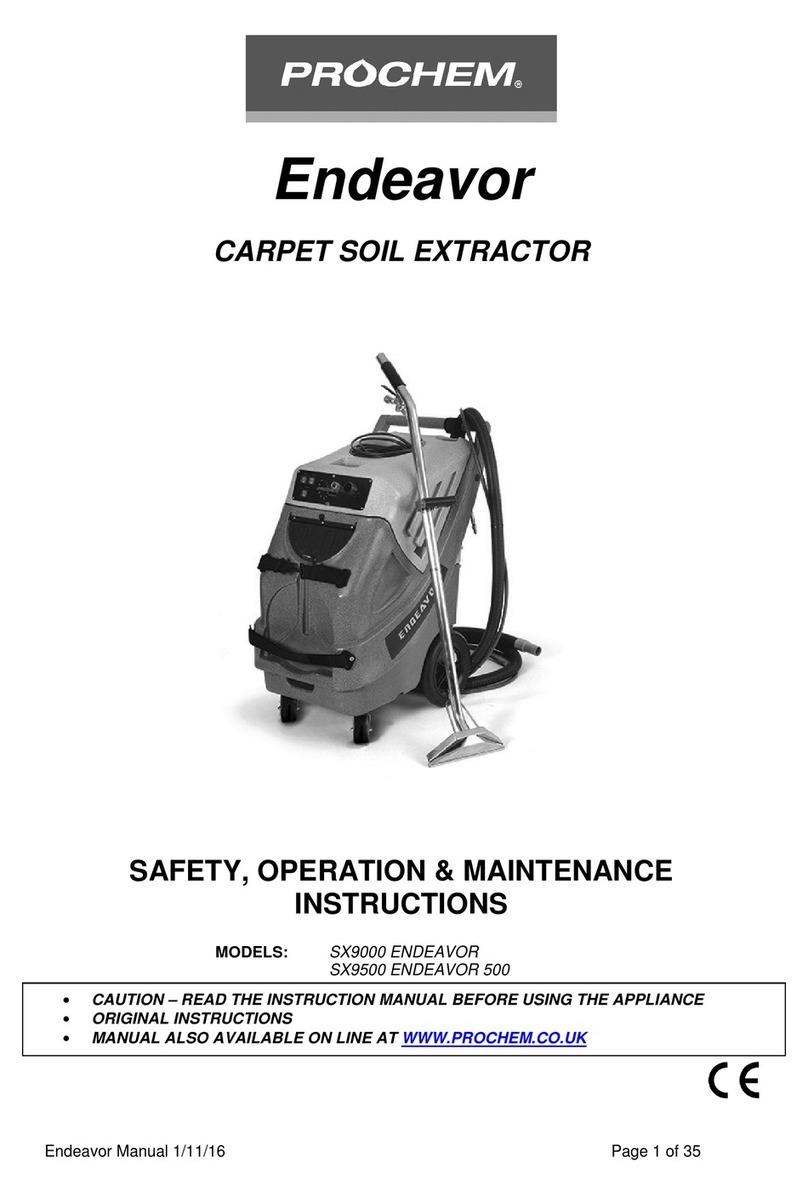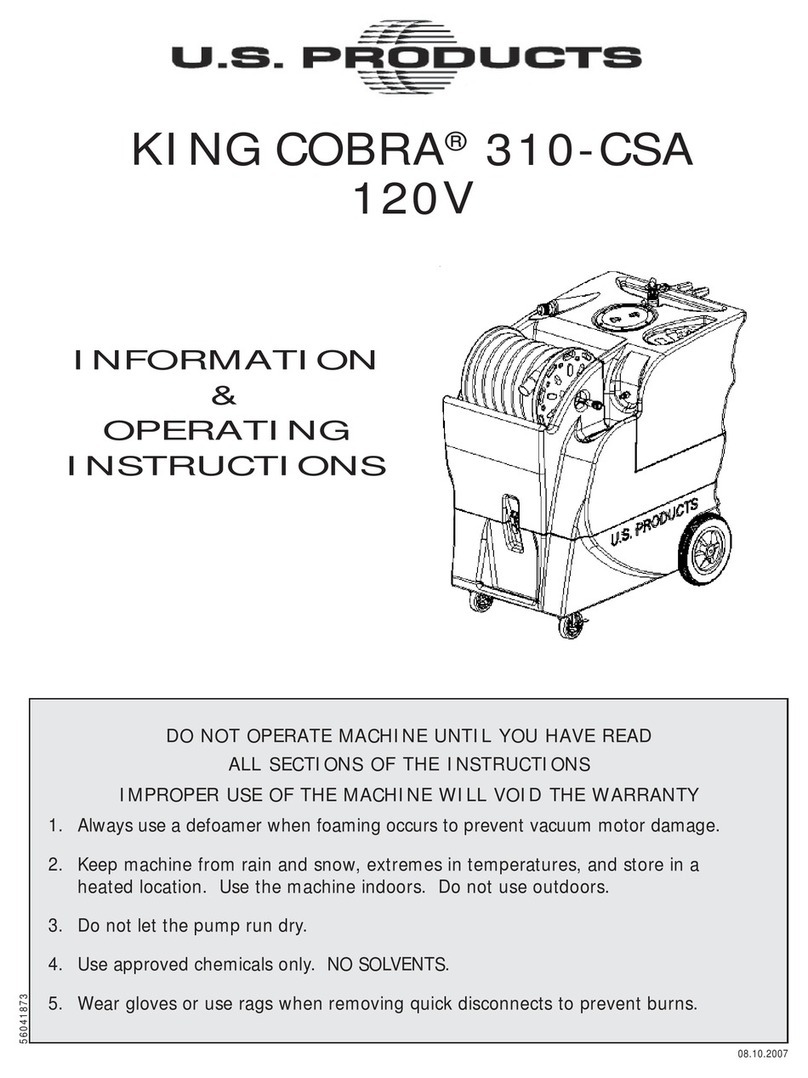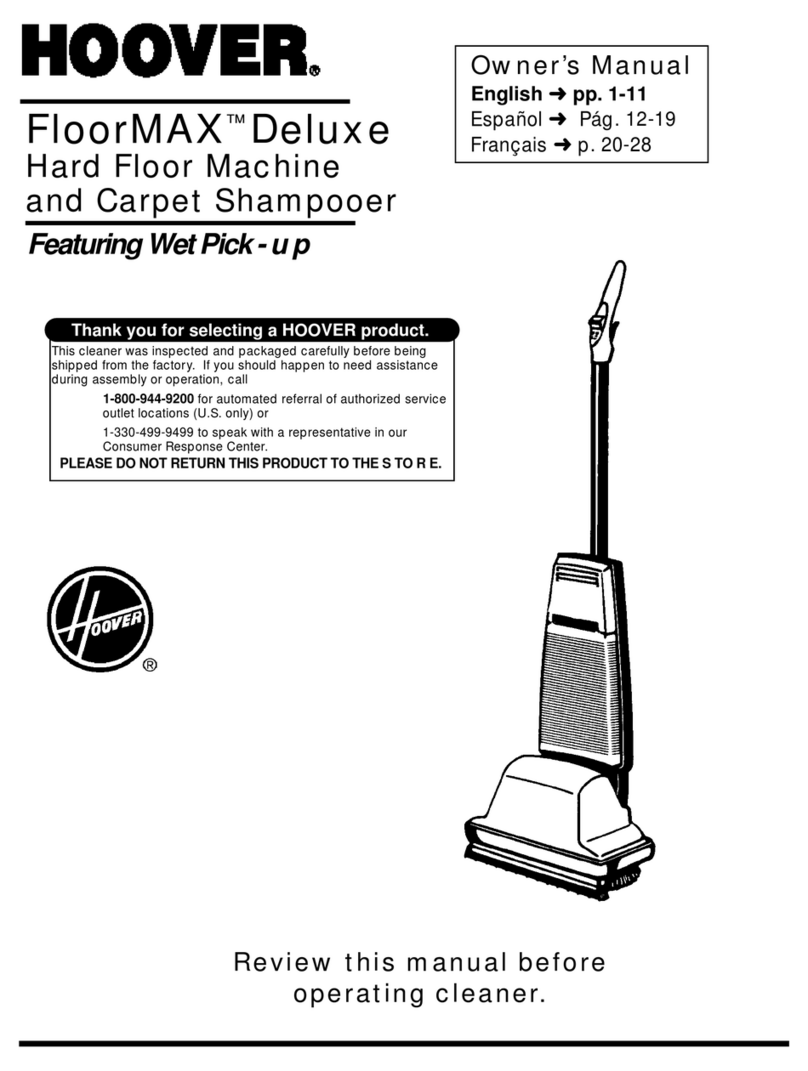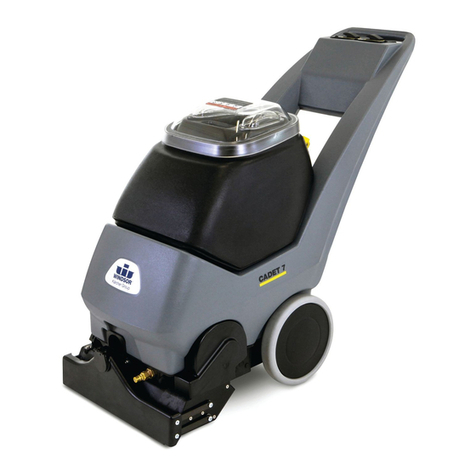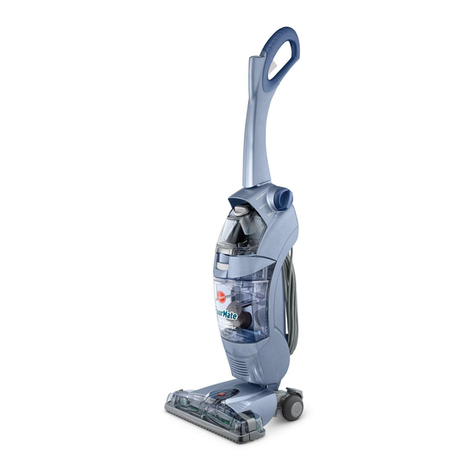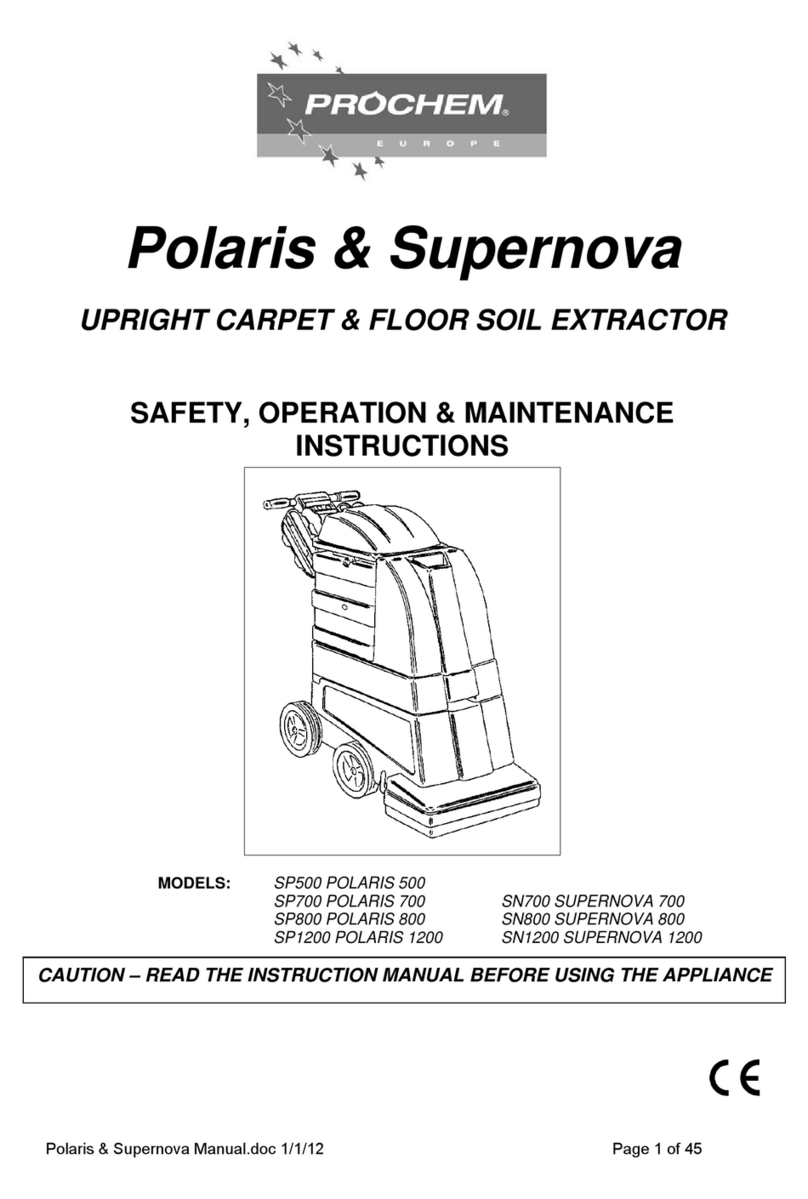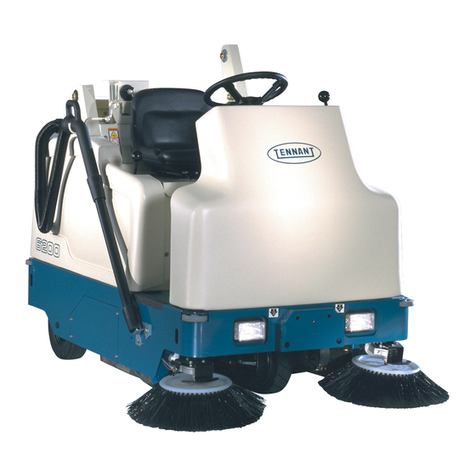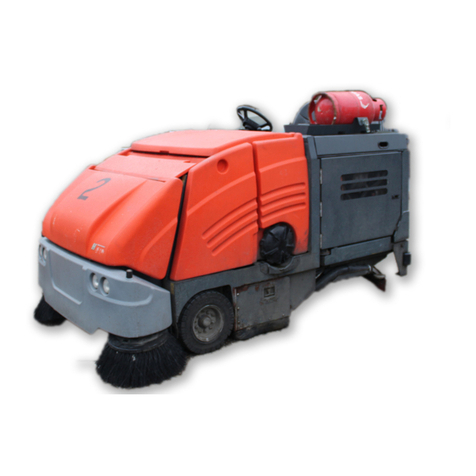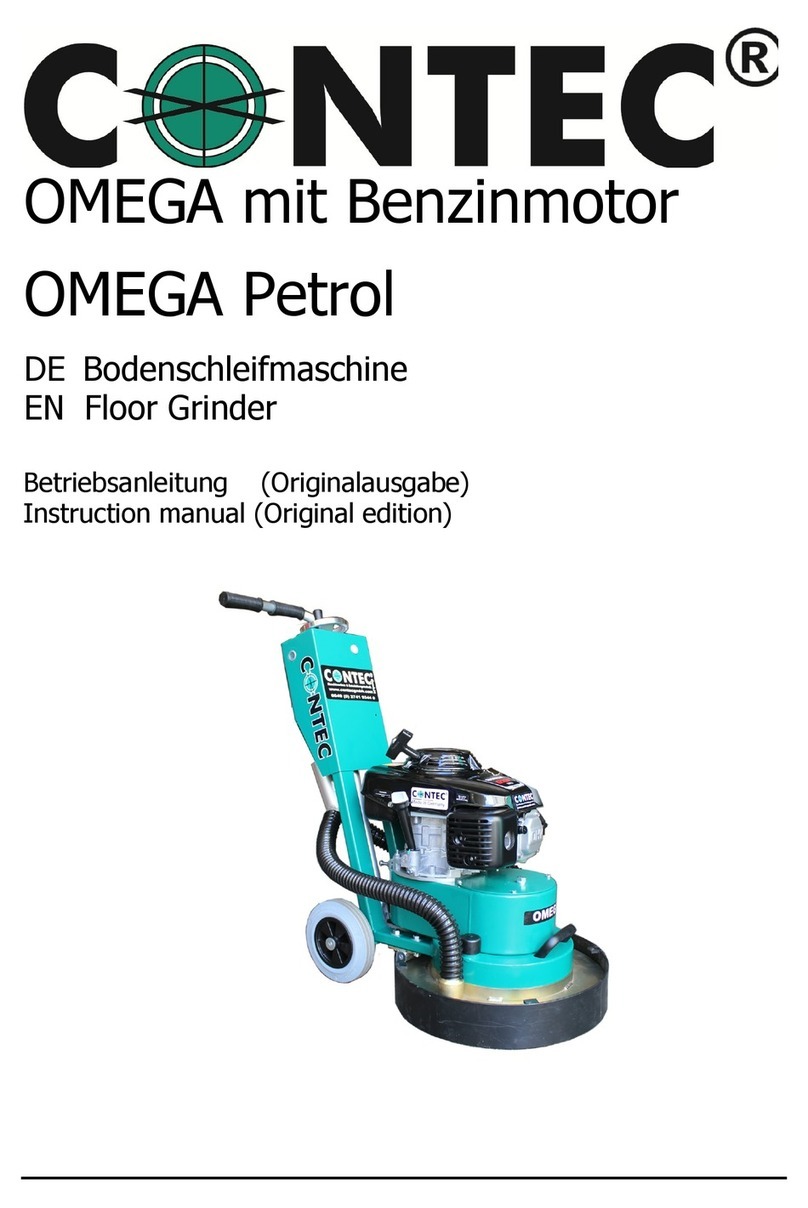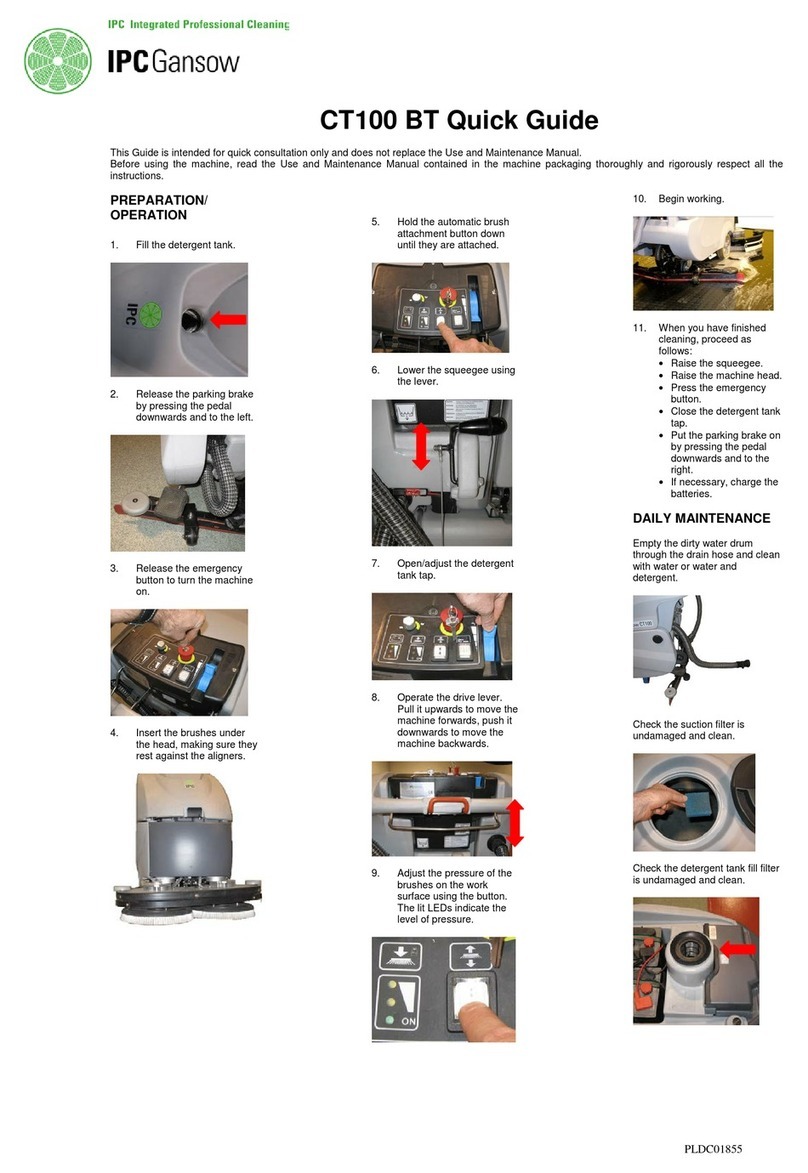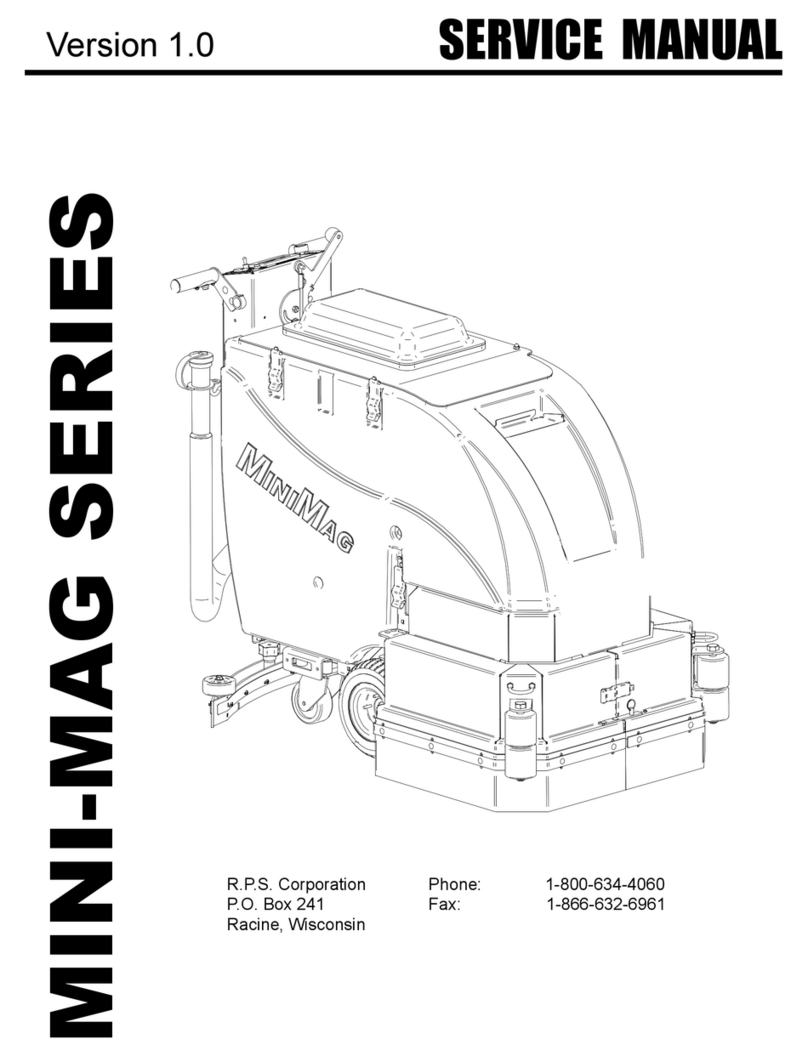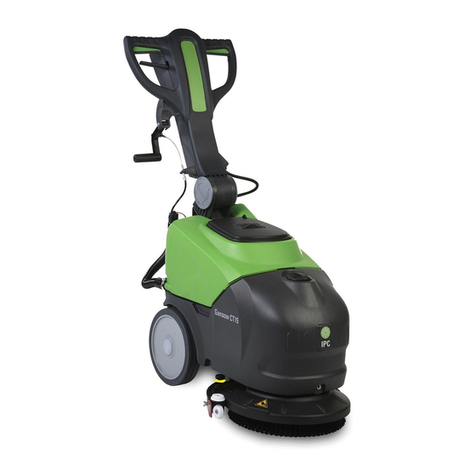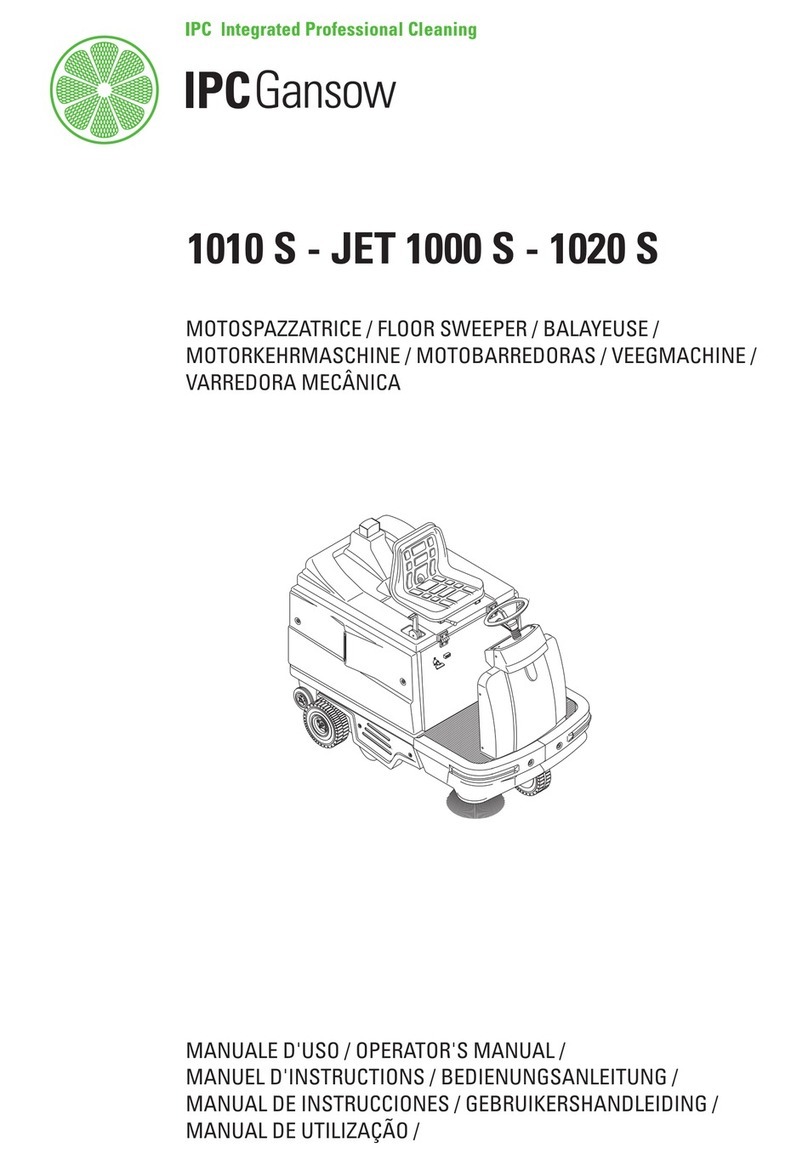
COMPONENTS
EVEREST 980086 02/18/03
1. WASTE TANK FULL INDICATOR LIGHT
This indicator light is activated when the waste
tank is full. When lit the unit will shutdown
protecting the equipment from damage. This
also indicates that the waste tank must be
emptied before the unit can be brought back in
service.
NOTE: Never dispose of waste water in
storm drains, water ways or on ground
areas. Always dispose of waste in
accordance with local state and federal laws.
2. LOW WATER PRESSURE SHUTDOWN
INDICATOR
This light indicates the pumping system has not
achieved 50 PSI. Reasons for this may be a
plugged water box strainer or problems with the
water supply. When this light is activated, the
water pump has shutdown and trouble shooting
is required.
3. ENGINE HIGH TEMPERATURE SHUTDOWN
INDICATOR
This light when activated signals an over heat
condition with the engine. When this occurs,
troubleshooting is required.
4. VACUUM GAUGE
This gauge indicates in inches of mercury how
much vacuum the system is producing at any
given time.
5. SOLUTION PRESSURE GAUGE
This gauge registers the amount of pressure in
the system.
6. SOLUTION TEMPERATURE GAUGE
This gauge measures the temperature of the
cleaning solution as it exits the machine.
7. WASTE PUMPOUT AND AUXILIARY WATER
PUMP SWITCH
This four-position switch is for activating the
waste pumpout device. It also serves to activate
the fresh water transfer pump. For turning on
pumps, rotate clockwise. For turning off pumps,
rotate counter clockwise.
8. SOLUTION PUMP SWITCH
This switch serves to energize the magnetic
clutch to turn the water pump on or off. Turn
clockwise for activating the pump and counter
clockwise for deactivating the pump.
9. CHOKE
The choke cable is for restricting air to the
carburetor, this enriches the fuel mixture. The
primary purpose is for starting in cold
temperatures. When the cable is pulled out air
is restricted, when pushed in the engine is in run
position.
10. THROTTLE
This serves to set the speed of the engine by
pushing the throttle lever in, it serves to
increase the speed and letting it out has the
effect of slowing down the engine. The lever
has notches cut into it, which serves to lock in
given speeds. The first notch is calibrated for
1250 rpm. The second notch is calibrated for
1900 rpm and the third notch is calibrated for
2400 rpm.
11. KEY SWITCH
The key switch controls the power for the
machine. To turn the machine on, rotate the
key clockwise until the starter engages the
engine. When machine is running let off the
switch and engine will continue to run. To turn
power off, rotate key counter clockwise to stop
position, engine will then stop.
12. HOUR METER
The hour meter records the number of hours the
unit has run. This serves as a time recorder for
servicing the machine.
13. CIRCUIT BREAKERS
These serve to protect the circuits from
electrical spike and over loads and protects
wires from damage and fire.




















